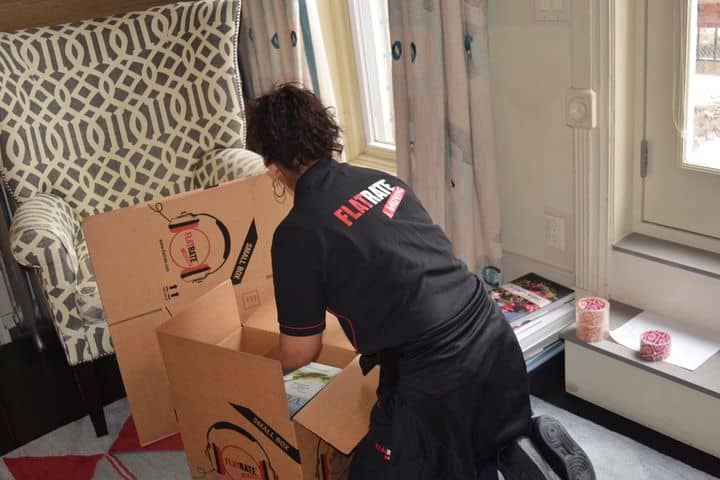So you enter all of your moving details, answer a few questions, maybe the company performs an inventory, and voila: you have a moving quote. But how exactly does a home moving quote work? Having a clear understanding of how a moving company determines your estimate tells you if the price is reasonable. Then you’ll also know it’s likely to change on moving day. We’ll explain the ways that your moving quote could be calculated, and what to look out for.
The types of moving estimates
There are three primary types of moving estimates that a company could provide. It’s important that you know this terminology so you know what to expect.
- Non-binding moving estimate. This is basically just the moving company’s best guess at what your move will cost. The price could be significantly higher come moving day because they miscalculated the scope of the move, and you are responsible for paying the additional costs. The mover can only bill you 110% of the original estimate on moving day, but you will be invoiced for the rest.
- Binding estimate. The mover will do a much more thorough assessment of your moving needs to give a firm price for your quote. As long as you don’t make significant changes to your move or add inventory, the mover is bound to adhere to this price.
- Binding-not-to-exceed estimate. In this case, the estimate given is the maximum price you’ll be expected to pay with the possibility of actually paying less. Your final price will be calculated based on the weight or volume of your shipment and the additional services required (packing, extra flights of stairs, etc.).
The process of getting a moving quote
How a moving company proceeds with giving you a home moving quote can also vary. A company that offers a non-binding estimate might be willing to give you a quote over the phone after asking you a few questions. That’s because they have the leeway to change the price on moving day! If you forget to mention something like an oversized couch, your moving quote won’t be very accurate. But if you’re only moving a small number of things and feel confident your inventory is accurate, this method could save you time.
For a binding estimate, expect to conduct a walk-through inventory with your moving company either in person or virtually. A virtual walk-through requires you to be a little more on the ball with cataloging your items. However, your moving consultant can ask questions about your home and belonging in real-time to be sure they have all the information they need. During an in-person walk-through, the moving consultant can get a clear sense of the layout of your home and what will be needed on moving day. A walk-through is the best way to get an accurate home moving quote!
Add-on services
Be sure to ask about what is and isn’t included in your home moving quote. If the initial quote looks remarkably low, there’s a chance something isn’t included and is left as an add-on. Things like packing materials and multiple flights of stairs can potentially cost extra! Here are a few things to inquire about:
- Packing and packing materials. If your movers are doing the packing for you, make sure you understand how they charge for packing materials in the original quote. Sometimes materials are included in up to a certain number of boxes, but additional boxes are extra.
- Stairs. Some moving companies include one flight of stairs in their quote, and some don’t. If your current home or new place has stairs, inform your movers. Have a look to be sure everything is written out in your estimate. This should include how many flights there are in both homes.
- Long carry fees. If the layout of your building necessitates carrying things a long distance to the truck, this will likely cost extra. Your estimate should clearly state what distance makes something a “long carry”. That way, you can know whether to anticipate this charge.
- Disassembly/reassembly fees. If your movers are required to take apart your furniture, electronics, or appliances, there may be an extra fee for their efforts. It is best to ask about these services ahead of time. Then the company can send movers who are specifically trained for this type of work.
- Shuttle fees. If your movers are unable to get the truck close to your home for any reason, they will need to use a shuttle van. This adds extra time and effort to the move, and thus extra cost.
When and how to get a moving quote
It’s best to start shopping for home moving quotes at least a month before you plan to move. That will ensure that you can get the movers you want on the dates that work for you. Shop around for at least three moving quotes so you have numbers to compare. Be sure to ask any questions you have to get an accurate comparison before you make your choice.
Get all of your information laid out in writing, but don’t sign anything until you’re ready to make a decision. Then choose a professional moving company that gives you a clear quote and top-notch customer service!

